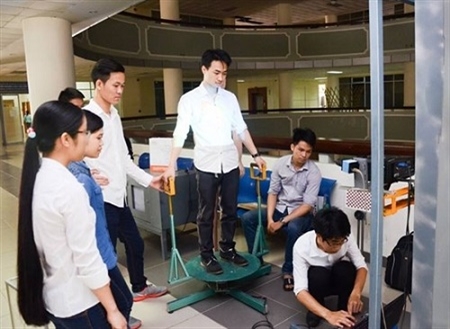Technology students create a big 3D scanner
A group of students of the Hanoi University of Science and Technology have successfully finished their research on a 3D scanner that can measure a person’s entire body.
- Vietnamese students win International Design Awards recognition
- VN student wins int’l letter-writing contest
- Da Nang okays first nano-tech project
The research is expected to be widely applied in the medical sector and fashion industry.
Under execution since 2014 by Nguyen Dai Ma Lap Phong, Dang Huy Duong, Mai Thi Huyen Thu and Hoang Thị Nhai of the university’s Mechanical Institute, the project recently won second prize at the students’ scientific research contest.
 |
| Phong’s group successfully creates a working prototype full-body 3D scanner. |
The project received a lot of praise from several fashion companies and medical research projects, said Phong, the head of the group.
“While brainstorming about the machine, we felt a bit daring because there has been no domestic research so far on a similar type of machine. Despite this, we were determined to persuade our teachers to agree to implement the project. All of us were very surprised with the result,” Phong said.
He recalled that during research, his group recognized that the 3D scanner system was widely and effectively applied. But the price of the equipment was very high, up to VND 3-4 billion per machine, so very few Vietnamese producers could afford it.
The machine’s design includes an engineering system with a turntable for a person to stand on. It can turn 360 degrees at a low speed to ensure the person’s entire body is scanned.
It also includes a projector and an HD camera moving along the person’s body. Based on high-fidelity measured data, fashion designers or medical researchers can reproduce the person’s form or organs, Phong said.
Asked about the difference between his machine and an imported one, Phong said his machine uses only one camera and one projector unlike imported machines that use from three to five cameras.
Dr. Nguyen Van Vinh of the Optics and Accurate Mechanicals Subject appreciated the group’s project, saying it has the potential to be widely applied because the global trend is towards 3D technology.

